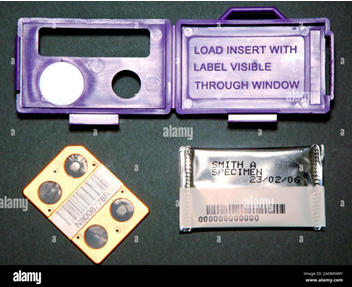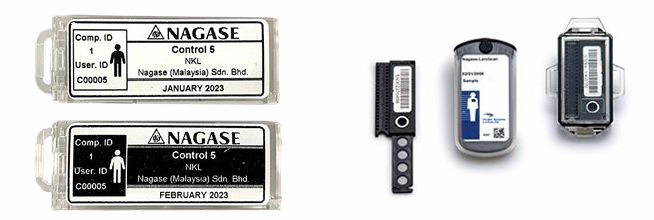Solid State Detectors
1/51
There's no tags or description
Looks like no tags are added yet.
Name | Mastery | Learn | Test | Matching | Spaced |
|---|
No study sessions yet.
52 Terms
Solid State Detectors Physics
Refers to types of crystalline substances that exhibit measurable effects when exposed to radiation.
Solid State Detectors Physics
Crystals have valence band (bound electrons) and conduction band (free electrons).
valence band; conduction band
Solid State Detectors Physics Crystals have _____ (bound electrons) and ____ (free electrons).
electron-hole pairs (EHPs)
Solid State Detectors Physics
Radiation creates___
electric field sweeps charges
Solid State Detectors Physics
Applied____ to electrodes →current pulse proportional to deposited energy.
Solid State Detectors Physics
More pairs created than in gases (≈3 eV per pair vs ~30 eV in gas).
Solid State Detectors Physics
Advantages: excellent energy resolution, compact, high intrinsic efficiency for certain energies.
Conductivity detectors
s a semiconductor device that measures radiation by detecting changes in electrical conductivity of the material.
excites electrons
Conductivity detectors
When ionizing radiation enters the crystal:
• It ____ from the valence band → conduction band.
electron–hole pairs (EHPs)
Conductivity detectors
When ionizing radiation enters the crystal:
This creates __.
drift to electrodes
Conductivity detectors
When ionizing radiation enters the crystal:
An applied electric field causes these charges to ____
proportional
Conductivity detectors
When ionizing radiation enters the crystal:
The collected charge is _____ to the energy deposited by the radiation
Direct conversion
Conductivity detectors
Key Characteristics
____ of radiation → electrical signal (no scintillation step).
High energy resolution
Conductivity detectors
Key Characteristics
(much better than NaI)
crystal purity; cooling
Conductivity detectors
Key Characteristics
Requires ___ and often _____ to reduce electronic noise
spectroscopy
Conductivity detectors
Key Characteristics
Used mainly in _____, less in clinical gamma imaging.
HPGe (High Purity Germanium)
Best energy resolution for gamma spectrometry (excellent for isotope identification)
HPGe (High Purity Germanium)
Require cryogenic cooling (liquid nitrogen or mechanical coolers) to reduce thermal noise.
thermal excitations
produce electron-hole pairs and raise noise
leakage current; improves resolution
HPGe (High Purity Germanium)
cooling reduces the ___ and _____
HPGe (High Purity Germanium
Typical uses: environmental monitoring, radionuclide identification, high-precision energy spectrum work.
HPGe (High Purity Germanium
Care: hygroscopic or sensitive to thermal cycles; require careful handling and spectrum calibration (energy & efficiency)
HPGe (High Purity Germanium)
gold standard for spectroscopy but not used for routine imaging.
Si(Li) Detector (Silicon Lithium Detector)
are semiconductor detectors madefrom siliconwith a lithium-drifted layer.
Si(Li) Detector (Silicon Lithium Detector)
They are commonly used for X-ray spectroscopy and are sensitive to X-rays and gamma rays
Si(Li) Detector (Silicon Lithium Detector)
can be operated at room temperature, making them more convenient to use compared to HPGe detectors, which require cryogenic cooling
Si(Li) Detector (Silicon Lithium Detector)
They are often used in applications like X-ray fluorescence (XRF) analysis and energy-dispersive X-ray spectroscopy (EDS) in materials science and geology
CZT (Cadmium Zinc Telluride)
A semi conductor detector that directly converts gamma photons into an electrical signal.
CZT (Cadmium Zinc Telluride)
Made of Cadmium, Zinc, and Tellurium(CdZnTe or CZT).
CZT (Cadmium Zinc Telluride)
Works at room temperature (unlike HPGe, which requires liquid nitrogen).
Gamma photon;CZT crystal; electron–hole pairs (EHPs)
electrodes
Collected charge pulse; photon energy
Pixelated anodes
CZT (Cadmium Zinc Telluride)
Step-by-step process:
____ interacts in ____ → creates____.
Electric field across the crystal sweeps charges to ___
____ is proportional to ___
____allow 2D position information (x,y), giving both energy and spatial localization
LiF (Lithium Fluoride) Detector
are typically used as Thermoluminescent dosimeters (TLDs) to measure ionizing radiation doses.
LiF (Lithium Fluoride) Detector
These detectors contain lithium fluoride crystals that can trap energy from ionizing radiation when exposed
visible light; radiation dose received
LiF (Lithium Fluoride) Detector
After exposure, the crystals can be heated, causing them to release the stored energy in the form of ____, which can be measured to determine the ____.
Scintillation detectors
Consists of phosphor, photocathode, photomultiplier tube (PMT) and charge collector
𝛾-or X-ray; light pulses
Scintillation detectors
_____ radiation causes ionization, the phosphor converts ionization into ____
photocathode; photoelectrons
Scintillation detectors
Light strikes ____ and emits ____.
Scintillation detectors
PMT accelerates and multiplies photo electrons
Luminescence Detectors
Uses electron trapping process
Luminescence Detectors
The electron are trapped when exposed to radiation and are stable at normal temperatures
Luminescence Detectors
If heated or subject to light, trapped electron returns to valence band and emits light
Thermoluminescent dosimeters (TLD)
Materials: LiF (Lithium Fluoride), CaF₂ (Calcium Fluoride), CaSO₄ (Calcium Sulfate), Li₂B₄O₇ (Lithium Borate), etc. Most common: LiF (TLD-100)
Thermoluminescent dosimeters (TLD)
Mechanism: radiation → trapped electrons in crystal defects; heating releases electrons → recombination emits light → light intensity is proportional to the dose
Thermoluminescent dosimeters (TLD)
Readout: heat is required to release trapped charge. heating in TLD reader produces glow curve; integrated light gives dose
Thermoluminescent dosimeters (TLD)
Pros: small, tissue-equivalent (LiF), reusable (after annealing), wide dose range.
Thermoluminescent dosimeters (TLD)
Cons: destructive readout (erases dose), requires calibrated reader, potential fading over time.
Thermoluminescent dosimeters (TLD).

OSL dosimeters (Optically Stimulated Luminescence)
Material: commonly Al₂O₃:C (aluminum oxide doped with carbon) —usedinmanymodernbadges
OSL dosimeters (Optically Stimulated Luminescence)
Mechanism: radiation traps electrons in metastable traps; stimulation with light (usually green laser/LED) releases electrons → emits luminescence measured by a photomultiplier or photodiode.
OSL dosimeters (Optically Stimulated Luminescence)
Pros vs TLD: high sensitivity, can be read multiple times (partial reads possible) without full erasure in some systems, lower fading, stable signal
OSL dosimeters (Optically Stimulated Luminescence)
Cons: readout equipment needed, small energy dependence at low photon energies.
OSL dosimeters (Optically Stimulated Luminescence).
